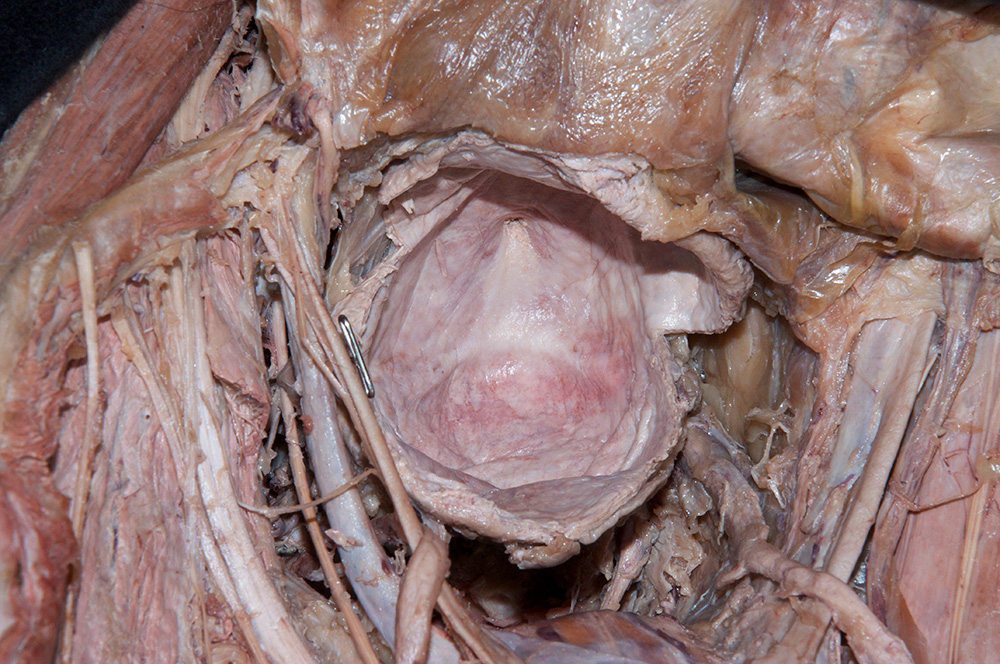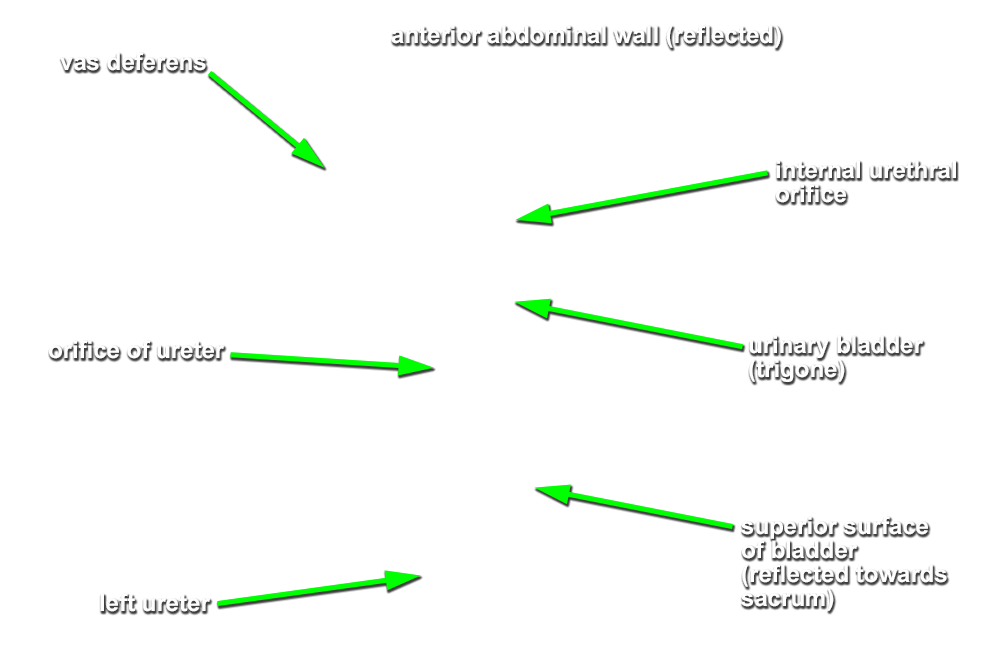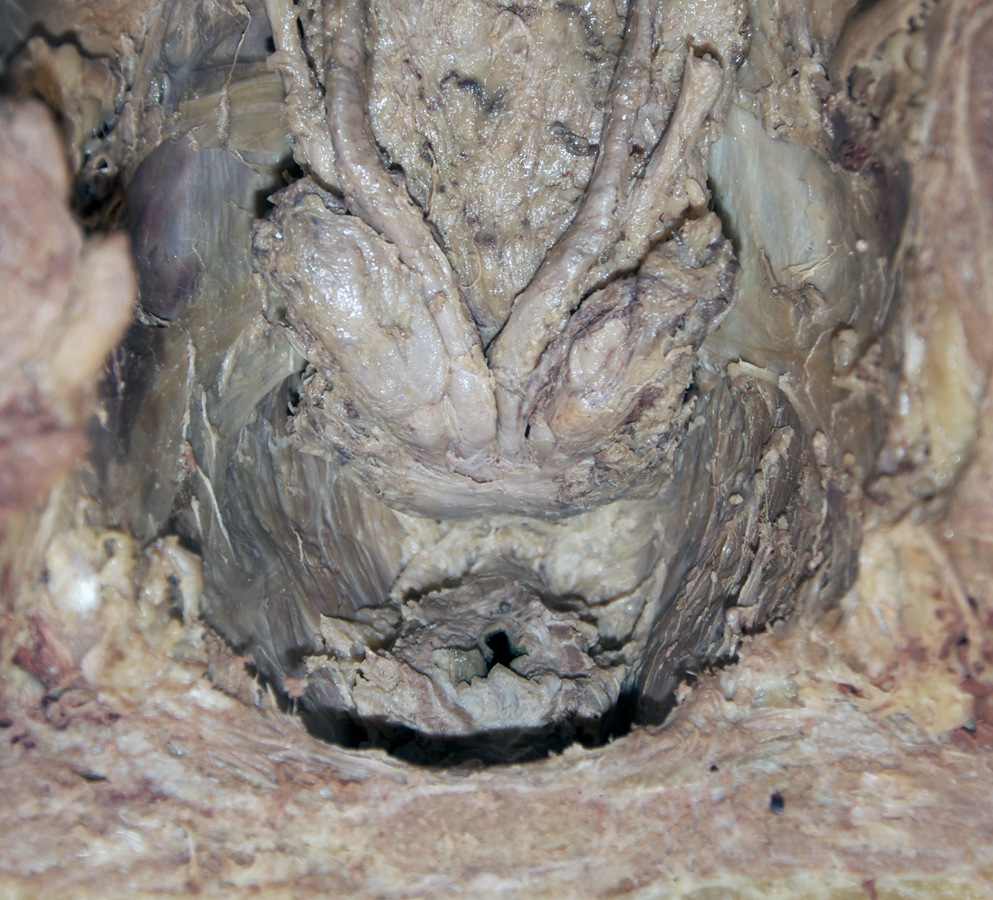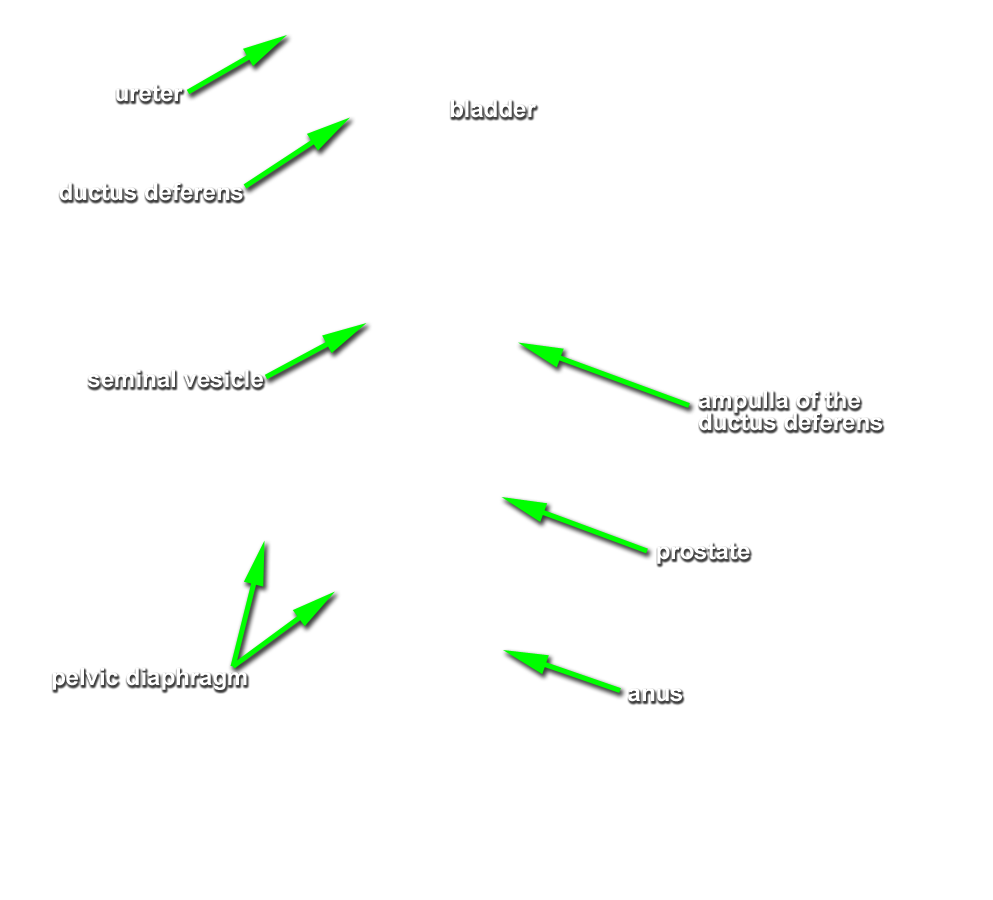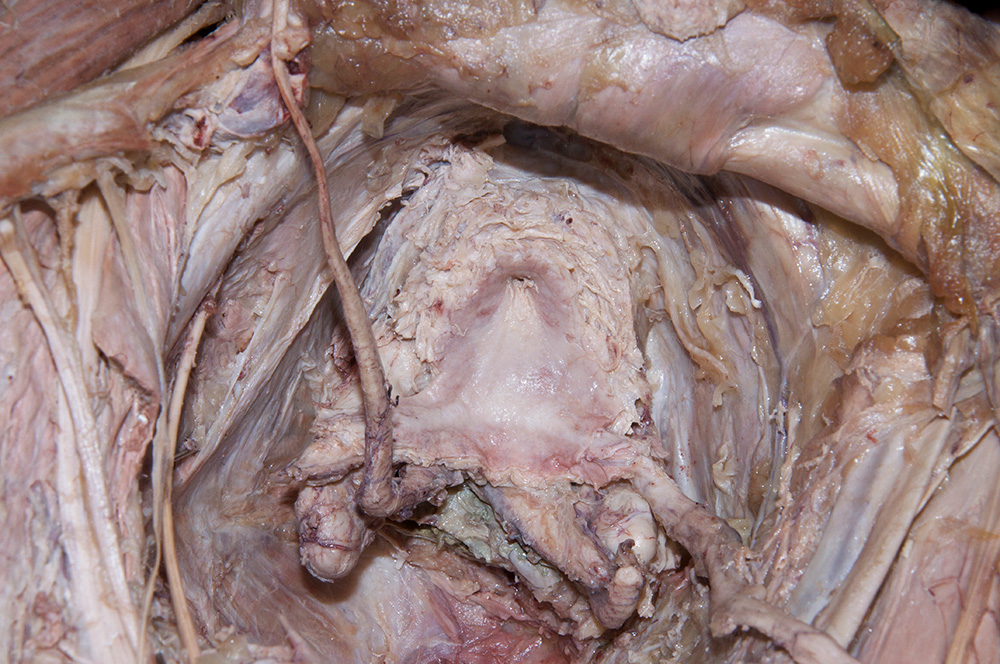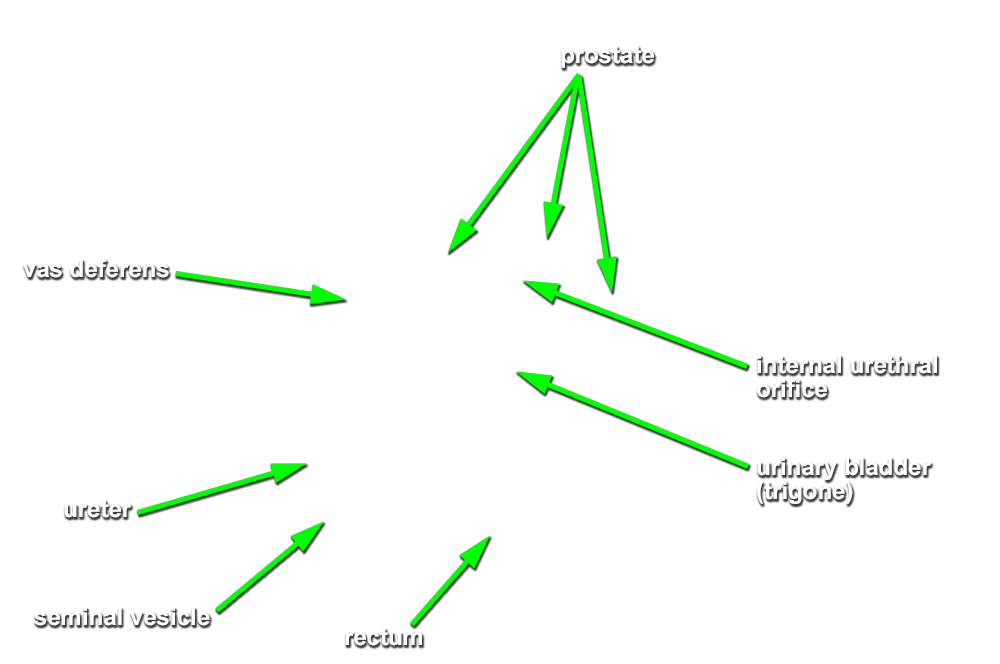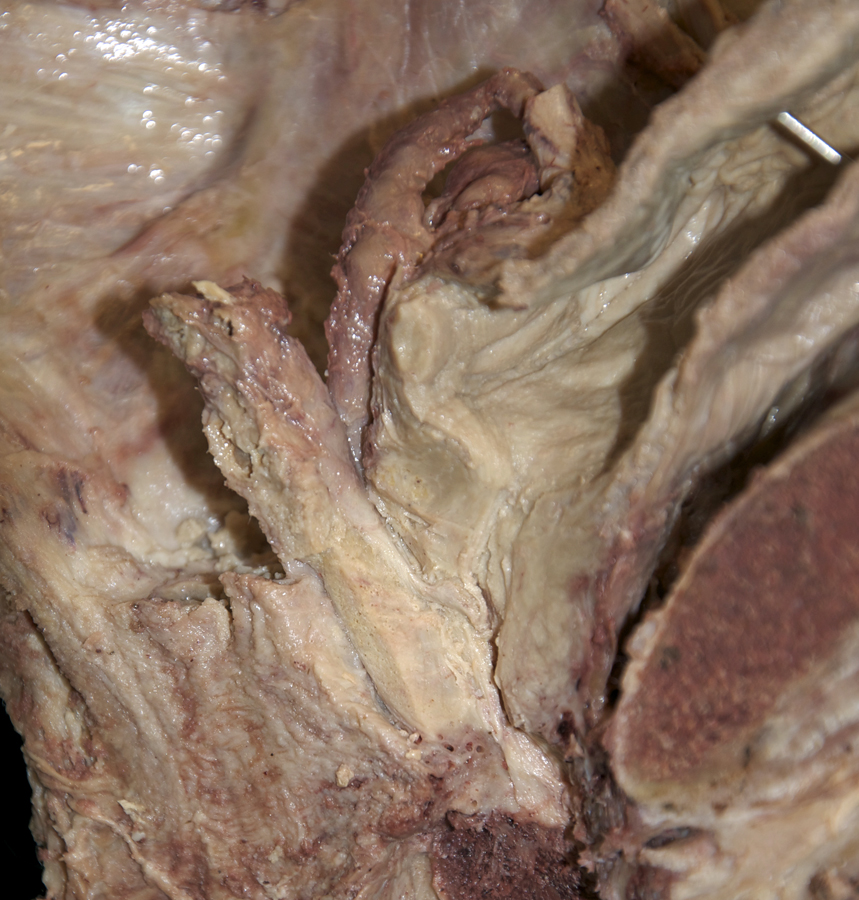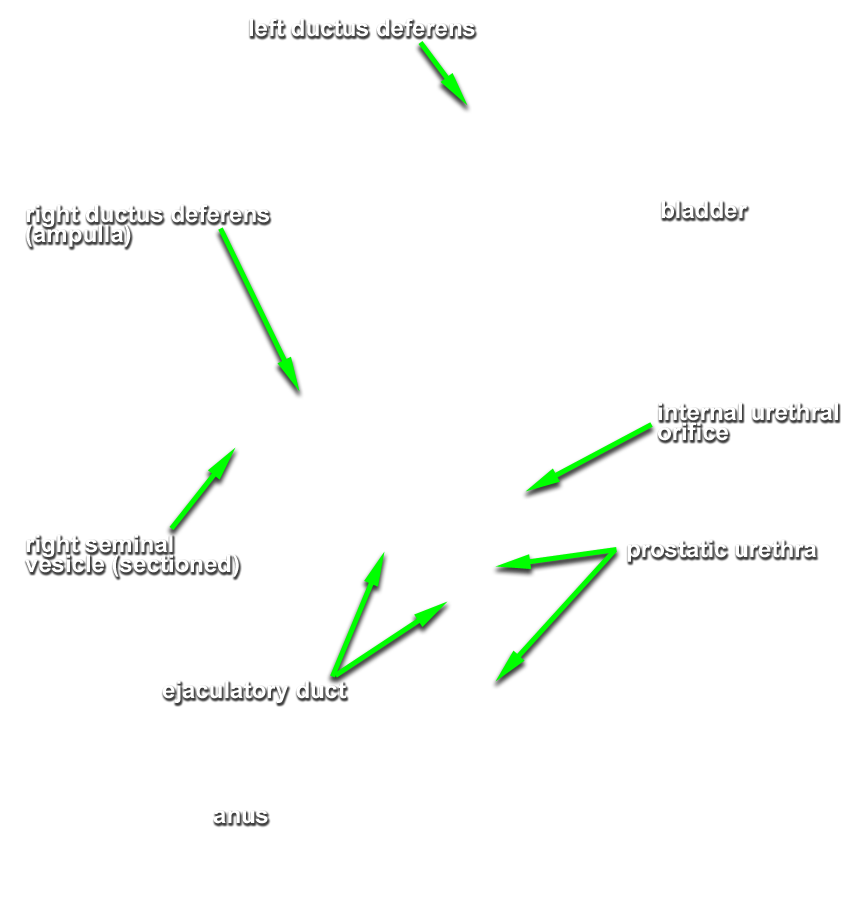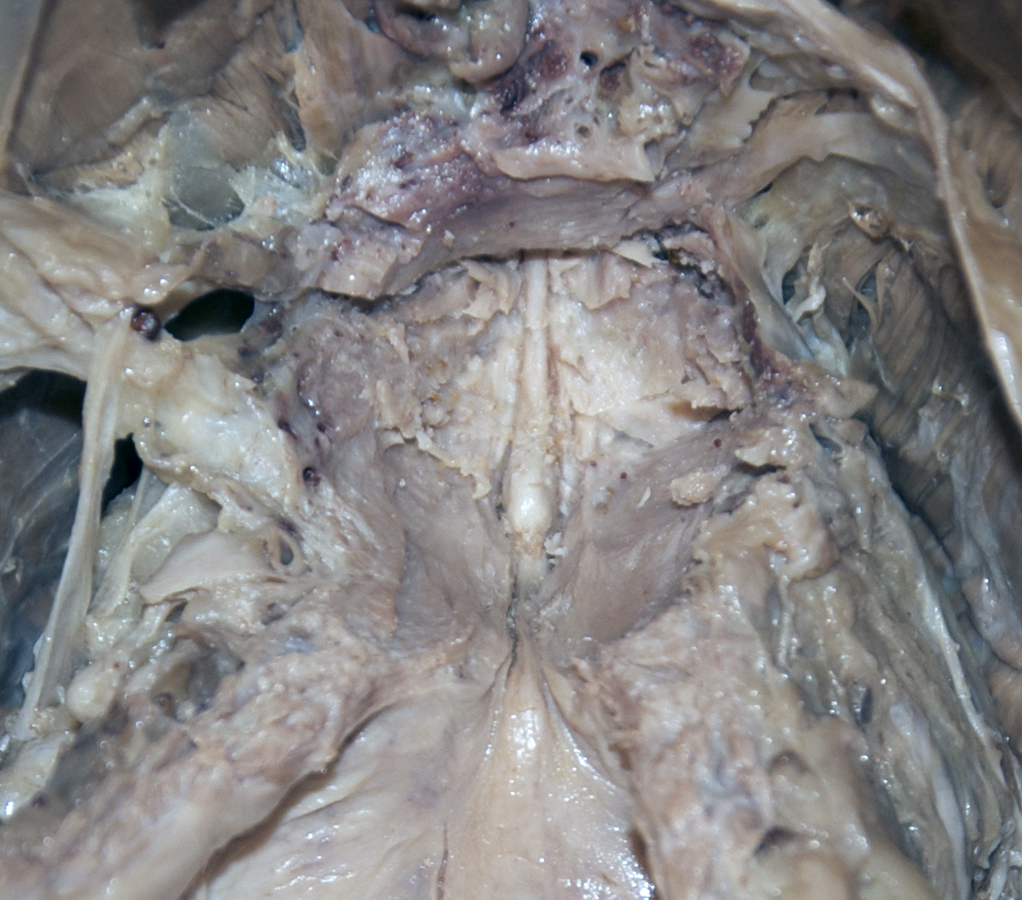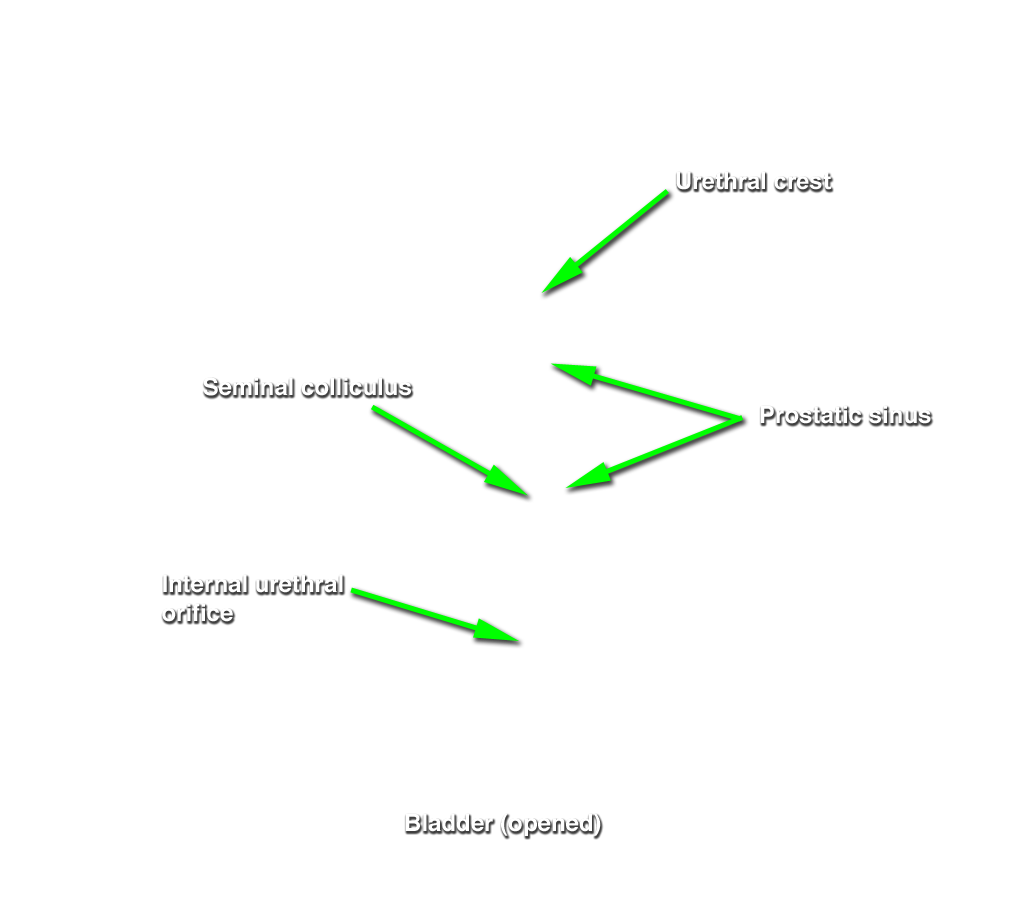Use your hands to explore the pelvic cavity and its contents.
- Identify the rectum, rectovesical pouch and urinary bladder. (G 3.14A;N 371;Gl 17.4)
- Trace the ureters to the bladder. Attempt to identify the trigone, ureteric orifices and internal urethral orifice . (G 3.24;N 350;Gl 18.10)
- Identify the ductus deferens at the deep inguinal ring. (G 2.17;N 347;Gl 19.3B) Trace the ductus deferens posterior-inferior to the bladder. Identify the ampulla of the ductus deferens and the seminal vesicle. (G 3.23;N 364;Gl 17.1 & 18.31) Palpate the prostate directly inferior to the bladder where the seminal vesicle and the ampulla of the ductus deferens meet . (G 3.23A;N 364;Gl 18.31) Identify the prostate in the midline cut. Attempt to identify the prostatic urethra.
Important Relationships (
Note: the Ampulla of the Dutus Deferens is the enlarged proximal region BUT is NOT labeled)
- The rectum is positioned posterior to the prostate and anterior to the sacrum and coccyx.
- The bladder is positioned superior to the prostate.
- The ductus deferens (ampulla) is positioned posterior to the bladder.
- The ductus deferens (ampulla) is positioned superior to the prostate.
- The seminal vesicle is positioned lateral to the ampulla of the ductus deferens.
- The seminal vesicle is positioned posterior to the bladder.
- The ureter passes directly posterior and inferior to the ductus deferens.
